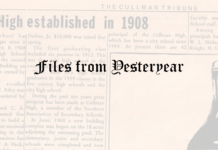I thought I would write something this week that has more meaning than a funny story.
There are a lot of things about Thanksgiving that most of us do not know. I did some research and found a lot of interesting facts that I did not know.
We all know about the Mayflower that brought the pilgrims to America. The Mayflower and a ship named Speedwell left England in July 1620. They turned back twice because Speedwell was leaking. Finally, the Mayflower left Speedwell and sailed on September 6, 1620.
The little Mayflower had over 100 people, all their belongings, and possibly some farm animals. The trip took 66 days. Just think, now you can fly from Huntsville, AL to London in 10 to 12 hours. I’m glad I wasn’t on the Mayflower.
There were lots of dangers on the high seas in those days. Pirates, bad storms, the possibility of falling overboard or getting sick and dying.
The Mayflower did have one serious problem. She was damaged by a bad storm and it cracked one of the massive wooden beams supporting the frame of the ship. Fortunately, the passengers had brought along a “great iron screw,” which helped raise the beam back into place so the ship could continue. In another storm, a young passenger, John Howland, was swept off the deck of the ship and into the ocean. He grabbed onto one of the ship’s lines and was pulled back on deck.
The pilgrims arrived at Cape Cod on November 11, 1620. A few weeks later they sailed up to Plymouth and started to build their town where a group Wampanoag Native Americans had lived before. It was a hard winter on the pilgrims and about half of them died. All the women except four died. My opinion is the mothers and wives sacrificed their lives trying to protect their families. Twenty-two men and 25 children and teenagers were still alive.
The crops of 1621 had been very good for the pilgrims and they wanted to celebrate and give thanks. The Wampanoag Native Americans wanted to join them for the celebration. The celebration lasted for three days. They probably had venison and shellfish that the Wampanoag brought and vegetables from the pilgrims’ gardens. This information was in a letter written by Edward Winslow, one of the people who sailed from England on the Mayflower in 1620.
The tradition of giving thanks to God merged with celebrations of the harvest to become a fall tradition in New England by the late 1600s.
In 1841 Winslow’s letter was rediscovered and made famous in a book, “Chronicles of the Pilgrim Fathers.” In 1863, a woman named Sarah Hale got President Abraham Lincoln to proclaim the final Thursday in November as a national holiday.
We say, “Thanksgiving Day.” Maybe we should say, “Day of Giving Thanks.”
All of us should remember our blessings and give thanks.
Copyright 2020 Humble Roots, LLC. All Rights Reserved.


























